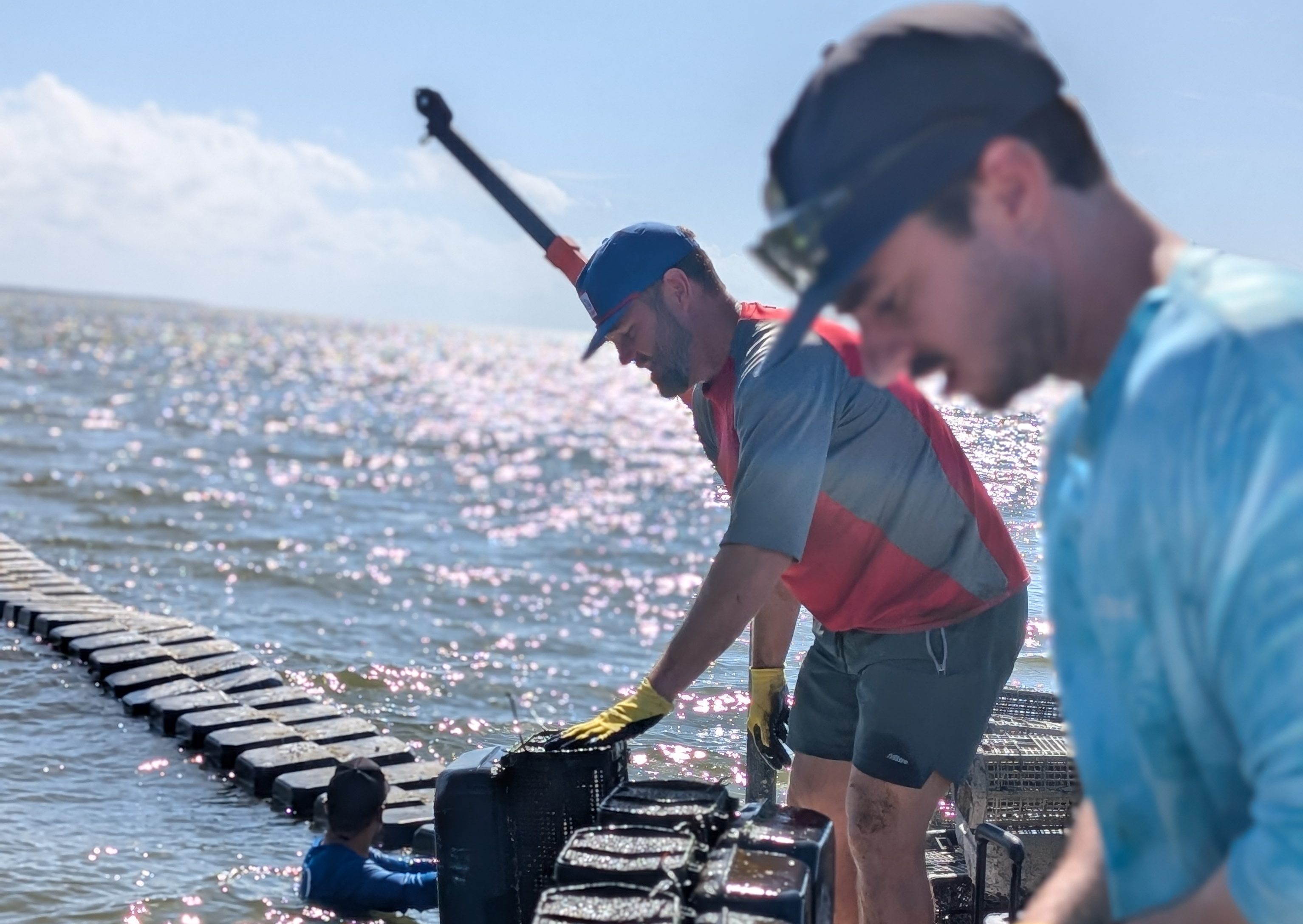
Everglades Oysters photo

Audio By Carbonatix
It was within five minutes of the call that Josh Wilkie and Fabio Galarce, founders of the new Everglades Oysters company, were already providing New Times with a rich primer on the history between Florida and the bivalve mollusk, also known as mussells, clams, and in this case, oysters.
Oysters have been a part of Florida culture for millennia, going back to the Calusa tribe (the “Shell Indians”), who made the protein-rich oyster a linchpin to their diet and culture. They used the shells of the filter feeders to create literal pyramids. Galarce adds that these pyramids were no shorter than the Pyramid of Giza. Indeed, the original Florida Coat of Arms of what appears to be a Calusa Native American in the foreground with a sailing steamship and tall “mountains” set against a rising sun.
So, how are these ancient mollusks entering a new era in South Florida, where they may just change the entire Gulf oyster industry, for good? You can thank an unlikely duo with deep-sea dreams.

Everglades Oysters photo
When news happens, Miami New Times is there —
Your support strengthens our coverage.
We’re aiming to raise $30,000 by December 31, so we can continue covering what matters most to you. If Miami New Times matters to you, please take action and contribute today, so when news happens, our reporters can be there.
The Duo: Two DJs Walk Into an Oyster Farm
Only six months ago, Galarce heard of a 74-acre oyster farm lease deep in the Cape Romano-Ten Thousand Islands Aquatic Preserve, approximately an hour from Port in Everglades City and near a shark nursery. Although the business graduate from Florida State University describes himself as a foodie and a carnivore who is always looking for new ventures, an oyster farm was entirely new terrain, especially one so remote. Therefore, he knew this could not be a one-person operation. “Josh and I were spearfishing. It was just one of those ideas when we were on the boat — ‘Hey, what about that oyster farm?’”
Any nightlife veteran knows Galarce as a local music heavyweight. He is the co-founder of the Eagle Room and half of the DJ duo, Dude Skywalker. Wilkie was a pitcher for the Washington Nationals of the MLB for seven years. Upon retirement, he worked for startups that led him to Miami. The most beneficial notch on his resume: being a tried-and-true South Carolinian from a long line of oyster farmers in his family. “My first thought was going back to South Carolina to get my family’s oysters,” Wilkie recalls on the company’s inception, “but that wasn’t going to be possible. It was really just seeing the market opportunity here and going out to fundraise. I saw that this was something we could do.”
The two, who met through mutual friends, soon began working on a proof of concept and business plan.

Everglades Oysters photo
A Sobering Reality: Gulf Oysters Are Nearly Gone
They had to obtain permission from various arms of the state and were eventually bestowed the largest aquaculture lease in the Gulf, according to Galarce, with over 200,000 oysters, nestled below, like blooming flower beds. It was then that the two discovered a sobering truth. “The big overarching problem is that the Gulf oyster is functionally extinct,” explains Galarce. “More than 85 percent of the reefs are dead.”
They realized that aquaculture “is very bootstrapped with only small farmers. In fact, the state issues two to five acres at a time, and the farms are small,” Galarce says about the dearth of farms. Oyster farming is embattled on two ends. First, there are the West Coast, Prince Edward Island, and Northeast hegemonies, where South Florida restaurants typically get their supply. The second, as the Miami Herald detailed in their profile of Everglades Oysters, is from “overharvesting, oil spills and other pollution, rising salinity and increasingly intense hurricanes driven by climate change.”
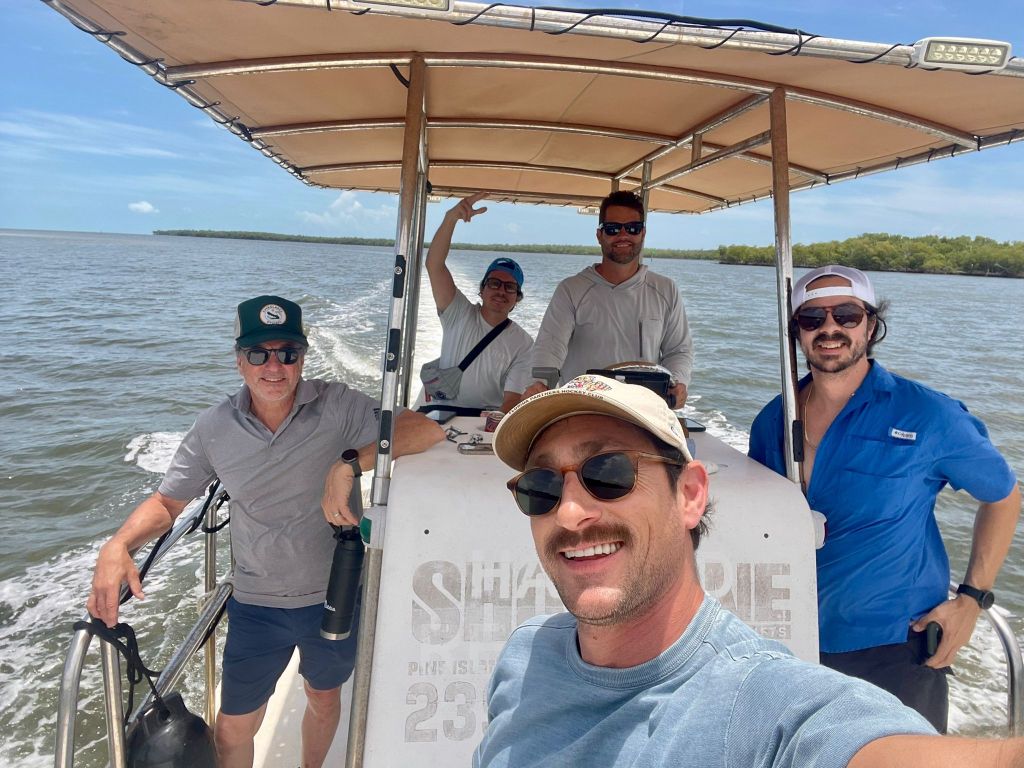
Everglades Oysters photo
Fighting the ‘Southern Oyster’ Stigma
Of course, the two care about their bottom line, but Wilkie and Galarce also aim for altruistic goals to regenerate the South Florida oyster farm, return to the halcyon days of oyster farming, and dilute what the two call a “prejudice.” “Southern oysters” sit in warm brackish water, as opposed to other oysters that deal with seasonal changes in water temperature. The long-standing misconception is that an oyster lying deep in warm, dirty water is more likely to harbor the potentially deadly Vibrio vulnificus bacteria. The Herald profile noted that, despite the oysters’ ability to filter fifty gallons of water a day, which leads to cleaner waters, the mollusk may absorb the Vibrio vulnificus bacteria into its flesh.
The two explain that this bacteria is common to all oysters and can also be contracted through means other than eating oysters, such as swimming in coastal waters, preexisting conditions like hepatitis, and, according to the Centers for Disease Control, “taking medicine to decrease stomach acid levels.”
The warmer waters undoubtedly lead to a faster rate of bacterial growth; however, the state mandates stringent requirements for oyster storage. “We have to be in the cooler by a certain time,” says Galarce on how to abide by state law. “It’s a race to get them cold so the bacteria can’t explode in growth. The irony is that there are Vibrio cases up in Massachusetts and all over the Northeast, and then prejudiced everything down here because chefs are taught that cooler water means that they are safer.”
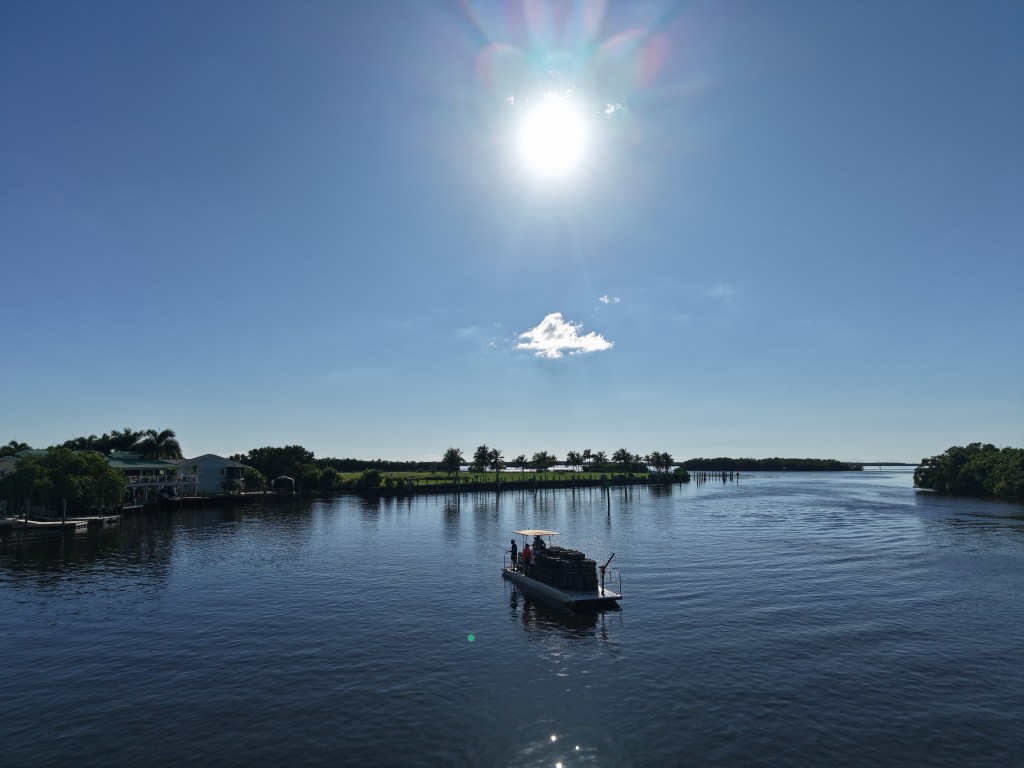
Everglades Oysters photo
The Goal: Build a World-Class Oyster Farm and a New Oyster Culture
Oyster farming is not an easy task, despite the oyster’s ancient appearance and seemingly simplistic, stationary life. It requires a considerable amount of capital, machinery, and logistics to raise the oysters and bring them to harvest. “We started thinking of it as a blue-tech project,” elucidates Galarce. “It would take a huge financial commitment. We’re trying to have a big impact and a big scale.” The company added Ross LaBrie, co-founder of III Points, and Harvey Pacha, founder of the production team Arca Build, as partners. “They are helping us to build the most incredible oyster farm and bring world-class production experience,” Galarce adds about the recent partnership. “It’s a local project. Everyone on the team is a person Josh or I have worked with in the past.” The core team is now roughly a ten-person operation.
In addition to costs, harvesting oysters takes time. The male oysters release their sperm into the water for the female oyster to receive and fertilize. Fertilized eggs develop into free-swimming larvae that drift for a few weeks before attaching to a hard surface to undergo metamorphosis into juvenile oysters known as spat. Everglades Oysters grow their own spat, which takes five months to mature.
The company operates as a collective in the meantime, partnering with ten other Gulf-based farms to harvest mature oysters and supply them directly to forty restaurants across Miami and South Florida. The list includes the Stubborn Seed on South Beach, Over Under in downtown, Regatta Grove, and Sunny’s in North Miami. They hope to contract with 100 restaurants by the end of the year. “If we can get to scale, that means we can turn South Florida into the new wave of oyster culture,” posits Galarce. “We thrive in the hospitality and culture side of things, and we’re having a lot of fun with the brand and being the provocative counterculture.”
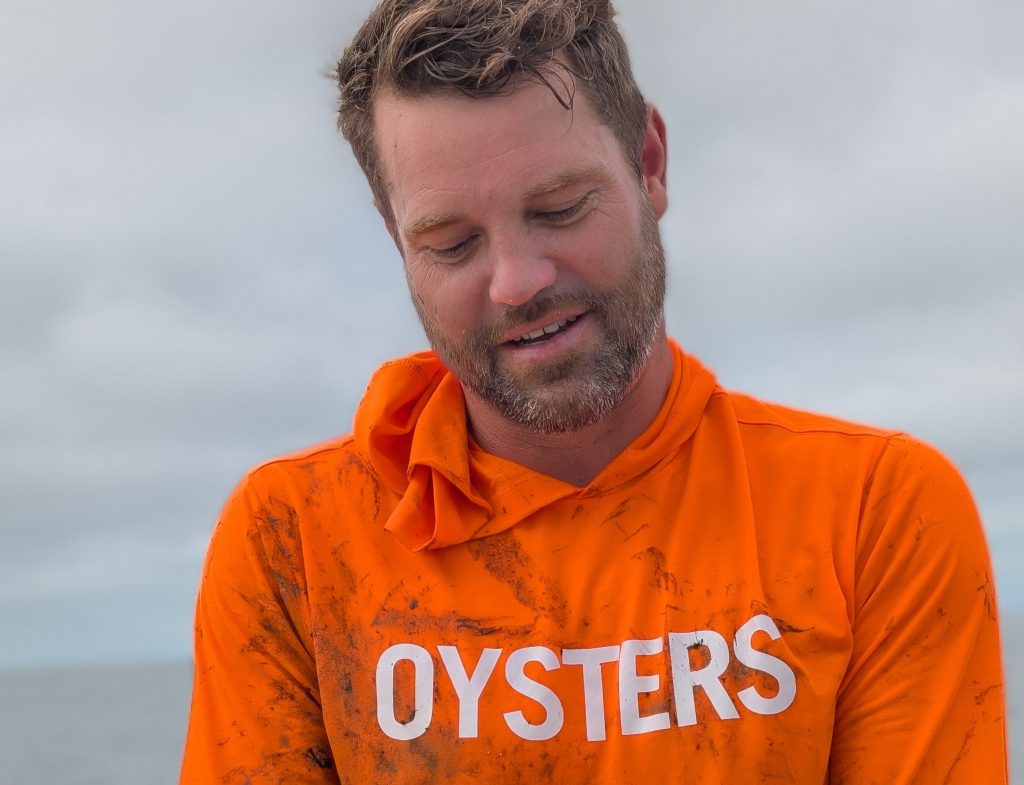
Everglades Oysters photo
Business Models That Help Chefs and Farmers Alike
In favor of the Everglades oysters are the historical analog, the oyster’s overall positive nutritional value, and the fact that the mollusk can be featured on a Michelin menu or a “buck-per-shuck” dive bar. Perhaps the biggest tool at their disposal is their direct-to-chef business model. Everglades Oysters does not carry an inventory. Instead, it’s the chefs who contract with the company to place an order. The farmers in the collective will then go to the farm and harvest the oysters, resulting in fewer trucks and hands. Wilkie adds that the “oysters are in the water when they’re ordered, and harvested the next day,” a turnaround that farms outside of South Florida are unable to provide.
“We created a distribution model where we can get the oysters into the town within a day of being harvested,” explains Galarce. “It’s the freshest way to get oysters that also supports local farmers.”
They also have goals to streamline the harvests. One such method is the use of a “floating flip-farm system.” Distilled down, hundreds of log-shaped pontoons (flat-bottomed baskets) hold the spats for growing. The spat sits just below the water’s surface inside these pontoons, where the water is rich in nutrients — perfect for growth. Galarce compares an oyster’s growing cycle to a fingernail: The spats grow from the top down. Oysters, however, don’t develop that classic smooth cup shape on their own. Instead, farmers would manually chip away at the oyster or throw them in a tumbler for polishing.

Everglades Oysters photo
By contrast, the flip system allows the waves to aggravate the pontoons, which in turn start shaping the oysters as they grow. After a while, the farmers fasten their boat to the pontoons and “flip” them over, where the bottom is now on top. The Herald and Galarce analogize to flipping dominoes. The oysters now bask in the sunlight, and any barnacles and algae begin to die off in a process called desiccation. The farmers then start pulling in their bounty and begin fulfilling their orders.
There are myriad ways to consume oysters, not much different than Bubba Blue’s monologue on shrimp. Grilled, covered in cheese, fried, baked, and so on. The most popular method of consumption is slurping up the raw oysters, once topped with cocktail sauce, mignonette sauce (made from shallots, red wine vinegar, and black pepper), or a spicy Thai sauce. If you haven’t had an oyster, critics will lament about the “slimy” texture, while lovers praise the soft-as-velvet slurp. The taste is a delightful brine-filled bite with a soupçon of sweetness. If you visit an institution like Swan Oyster Depot in San Francisco, eating an oyster in the morning is no different than having coffee and toast.
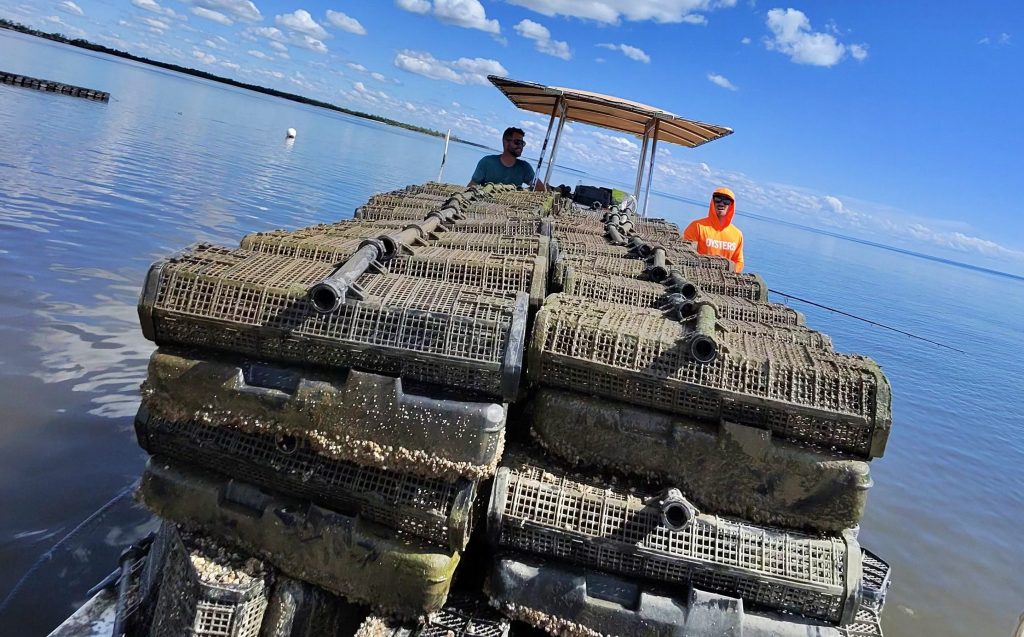
Everglades Oysters photo
Shell Recycling Program
Even the shells have utility. The company implemented a shell recycling program that gives these empty shells a second life after they are consumed. “We started the only shell recycling program in Miami,” says Galarce. Participating restaurants hold their empty shells for Everglades Oysters to pick up.
The company then quarantines the shells for six months at an avocado farm to “fossilize” them and kill any contaminants. People can then use the shells for restoration projects, such as constructing improved barriers to safeguard against storm surges, reintroducing them into their natural habitat as “feeding grounds” for fish, or even transforming them into topsoil or resin.
Wilkie adds that they are working with local agencies to recycle the shells for future reef restoration. “My great uncle started an oyster restoration project in South Carolina,” says Wilkie. “It’s cool to continue their legacy while making my own.”
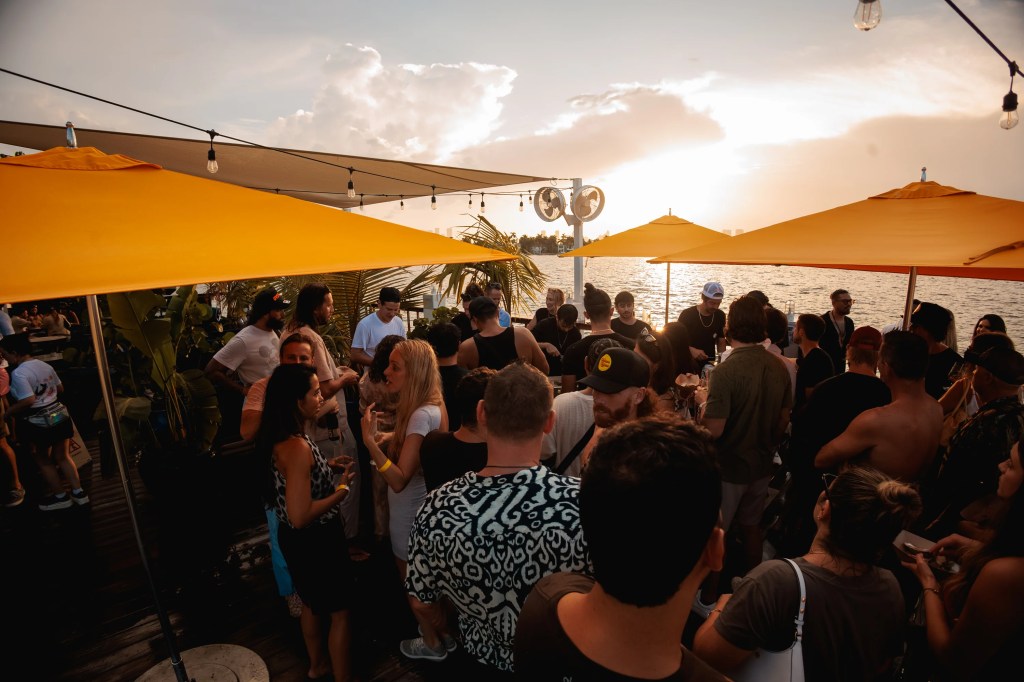
Everglades Oysters photo
The Nightlife Energy Ain’t Going Away: Meet ‘Reefer Parties’
Galarce and Wilkie were not going to let their nightlife bona fides fall to the wayside, even with early morning drives to the Everglades. They created awareness parties for oysters, dubbed “Reefer Parties,” also known as “Oyster Reefer” events. The locations vary, but it is usually a DJ spinning music, and often, there are all-you-can-eat oysters. It’s brand marketing while also informing the audience that Florida oysters can be just as linked to Miami as stone crabs. The next party will take place at Over Under on Sunday, November 23, featuring a brunch-style event.
Whether the true “golden era” for South Florida oyster farming was once a century ago or millennia, Galarce and Wilkie see a bright future ahead, like the sun beating down on an oyster’s rigid shell. “We’re just focusing now on quality and consistency and growing,” adds Galarce. “The parties will grow, the size will grow, and the frequency.”
Everglades Oysters. evergladesoysters.com.